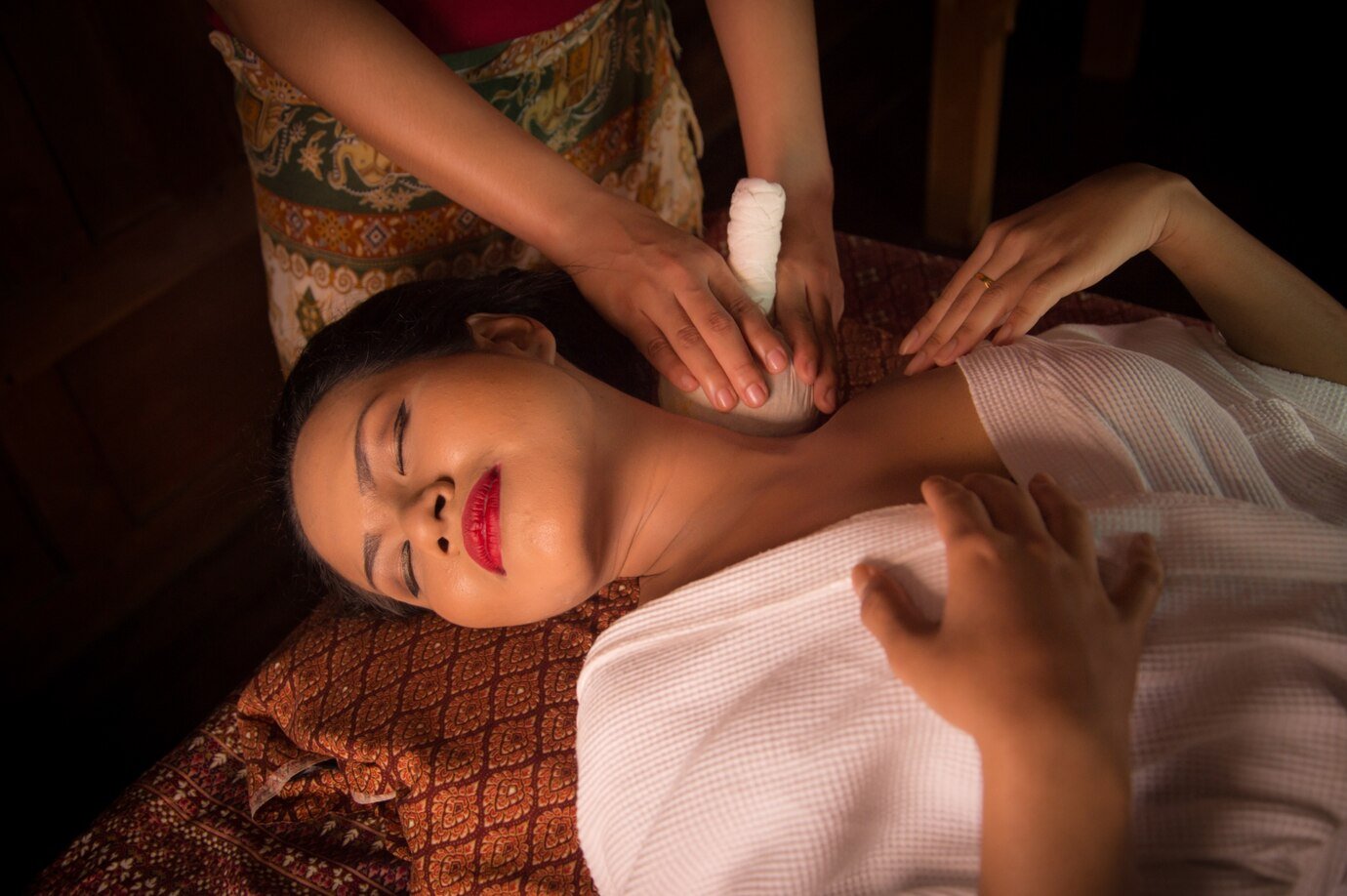History and Importance of Massage in Thailand

History and Importance of Massage in Thailand
Thailand is renowned for its therapeutic massage, which is widely recognized and accepted around the world. Traditional Thai massage is a long-standing cultural heritage, with practices that have evolved over time. Thai massage originated from the combination of ancient medical knowledge from China, India, and local Thai traditions. It is not merely a form of relaxation, but also a therapeutic approach for treating various health conditions and promoting physical and mental recovery.
Traditional Thai Massage
Traditional Thai massage has its roots in ancient Thai medicine, passed down by skilled practitioners. This form of massage uses techniques such as acupressure, stretching, and balancing the body's energy flow. These methods help stimulate blood circulation and internal energy, making Thai massage highly effective in relieving muscle pain, fatigue, and stress. Additionally, it improves the functioning of various body systems, such as digestion, circulation, and detoxification.
Development and Adaptation in Modern Times
Full-body massage in Bangkok is a blend of traditional techniques with modern innovations designed to suit the needs of today's fast-paced lifestyle. Today, full-body massage is not limited to manual techniques but also incorporates various tools and accessories, such as hot stones, essential oils, and even Swedish or aromatherapy massage techniques. These developments have expanded the benefits of Thai massage, allowing it to better address the contemporary needs of people.
Massage in Bangkok
In Bangkok, the capital of Thailand, full-body massage is immensely popular among both locals and international visitors, especially in tourist-heavy areas like Sukhumvit, Sathorn, and Silom. Most massage centers in Bangkok combine traditional Thai massage with other techniques, such as oil massage, hot stone massage, or Swedish massage, to offer diverse services that cater to a wide range of customer preferences.
Full-body massage in Bangkok not only relaxes tense muscles but also helps alleviate stress caused by work or a fast-paced lifestyle. Furthermore, it enhances blood circulation and supports detoxification, promoting overall health and well-being for both the body and mind.
In summary, massage in Bangkok is more than just a form of relaxation and body therapy. It is a holistic health practice that fosters long-term wellness, which is why massage has become such an important part of daily life for people in the city today.
Full Body Massage Types
A full body massage can be offered in various styles depending on the client's needs, including different techniques and methods used. The following are popular types of massages available in Bangkok:
Traditional Thai Massage
Traditional Thai Massage is an ancient therapeutic art with a long history, important for promoting health and relaxation. Influenced by Chinese and Indian medicine, Traditional Thai Massage focuses on using various techniques to balance the body's energy and alleviate pain. This massage incorporates the use of hands, elbows, and feet to stimulate different points of the body, including stretching muscles and joints to improve flexibility and reduce tension.
Principles of Traditional Thai Massage
Traditional Thai Massage follows the principles of ancient Thai medicine known as "Sen," or "energy lines." These lines are believed to connect various energy points throughout the body. Stimulating these energy lines helps improve blood circulation, reduce blockages of energy, and enhances the function of body systems such as the nervous system, blood circulation, and digestion.
Traditional Thai Massage not only helps relieve muscle tension but also promotes flexibility in muscles and joints. The stretching techniques used in this massage increase muscle flexibility, reducing soreness from daily activities or improper exercise postures.
Techniques in Traditional Thai Massage
There are several techniques used in Traditional Thai Massage, including:
Acupressure: Applying pressure to specific points on the body to stimulate blood circulation and energy flow. This technique can help relieve pain from muscle strain or inflammation.
Stretching: Stretching the joints and tense muscles to increase flexibility and reduce stress. These stretches are often performed in relaxed positions, providing a comfortable feeling.
Use of Elbows and Feet: This technique applies deeper pressure to stimulate energy lines and provide a more effective massage to relieve muscle tension.
Benefits of Traditional Thai Massage
Traditional Thai Massage offers numerous benefits not only for the body but also for the mind and emotions, including:
Improved Blood Circulation: Traditional Thai Massage stimulates blood flow throughout the body, helping deliver nutrients and oxygen to various body parts more efficiently.
Stress and Tension Relief: It relaxes tense muscles caused by physical work or mental stress.
Enhanced Flexibility: Stretching muscles increases flexibility, helping the body move more freely.
Pain Relief: Traditional Thai Massage can alleviate pain caused by muscle tightness or incorrect postures during movement.
Better Sleep: The relaxation induced by the massage can help improve the quality of sleep.
With these benefits, Traditional Thai Massage is a popular and well-recognized form of therapy, not only in Thailand but globally as well.
Oil Massage
Oil massage is a technique that uses oils or lotions to help the hands and arms of the massage therapist glide smoothly over the skin. The use of oils makes the massage gentler and reduces friction between the skin, helping the recipient feel more relaxed. Additionally, it benefits the skin and helps reduce muscle tension.
Benefits of Oil Massage
Skin Nourishment
The oils used in oil massages, such as coconut oil, almond oil, or herbal oils, are known for their skin-nourishing properties. These oils help keep the skin soft and hydrated, reduce dryness, and make the skin appear healthier.Reduces Muscle Tension
Oils help the therapist perform the massage smoothly and effectively. The application of oil during the massage helps relax muscles that have become tense due to physical work or mental stress, resulting in increased comfort and reduced fatigue.Stimulates Blood Circulation
Using oil during the massage stimulates blood circulation. Improved circulation helps deliver oxygen and nutrients throughout the body, leaving the recipient feeling refreshed and energized.Mental Relaxation
In addition to its physical benefits, oil massage also aids in mental relaxation. Essential oils or soothing fragrances can help reduce stress and promote a sense of calm and relaxation.
Choosing the Right Oil for Oil Massage
There are various types of oils used for oil massage, depending on the intended benefits. Some common choices include:
Coconut Oil: A popular natural oil for massage, known for its skin-moisturizing and nourishing properties.
Almond Oil: Helps smooth the skin and is excellent at reducing irritation.
Essential Oils: Such as lavender, rosemary, or blends of essential oils, which promote relaxation and mental healing.
Hot Stone Massage
Hot stone massage is a technique that uses heated natural stones placed on specific points of the body to promote relaxation and improve blood circulation. The stones are warmed in hot water and applied to the body to enhance the effectiveness of the massage by providing deep warmth that penetrates the muscles, helping to relieve tension and reduce pain.
Benefits of Hot Stone Massage
Relieves Muscle Tension
Hot stone massage helps relieve tension in muscles caused by physical work or mental stress. The heat from the stones helps relax muscles and joints, reducing tightness in the body.Stimulates Blood Circulation
The heat from the stones helps expand blood vessels, promoting better circulation. Improved circulation ensures that oxygen and nutrients reach the body efficiently, while waste products are eliminated from the system.Pain Relief
The use of hot stones in massage helps relieve pain caused by muscle strain or minor injuries. It also stimulates the nervous system, reducing soreness from physical activity or poor posture.Mental Relaxation
The warmth of the hot stones provides both physical and mental relaxation. Hot stone massage helps reduce stress and anxiety, leaving the mind calm and ready for rejuvenation.
By incorporating the use of essential oils or heated stones into your massage routine, you can enjoy a deeply relaxing experience that benefits both your body and mind.
Hot Stone Massage Process
In hot stone massage, a skilled therapist selects stones of the appropriate size and shape to target specific areas of the body. These stones are heated in warm water before the massage begins. The hot stones are then placed on areas with tension, such as the shoulders, back, or neck. The heat is allowed to penetrate deep into the muscles, while the therapist uses their hands to massage the body, distributing the heat and enhancing the muscle relaxation process.
Choosing Stones for Hot Stone Massage
The stones used in hot stone massage are typically chosen for their ability to retain heat, such as basalt stones. These dense stones can hold heat for an extended period, making them ideal for therapeutic purposes. Using this type of stone ensures long-lasting results and effective muscle relaxation.
Hot stone massage is a popular technique for those seeking both physical and mental therapy. It provides numerous benefits, including muscle relaxation, stress relief, and improved blood circulation.
Swedish Massage
Swedish massage is one of the most popular massage techniques worldwide. It is known for its gentle approach and uses lighter strokes to help relax the body and alleviate stress. Swedish massage primarily aims to relieve muscle tension and promote better blood circulation, leaving clients feeling refreshed and relaxed.
Swedish Massage Techniques
Effleurage (Light Stroking) Effleurage is a massage technique that involves gentle, long strokes using the palms or fingertips to stimulate the skin and underlying tissues. This technique helps improve blood and lymphatic circulation throughout the body.
Petrissage (Kneading) Petrissage involves kneading, squeezing, or rolling the muscles to relieve tension. This technique is beneficial for loosening tight muscles and improving flexibility.
Friction Friction involves applying pressure with fingertips or palms to specific muscle groups, helping stimulate blood circulation and relieve pain in areas of muscle tension.
Tapotement (Tapping) Tapotement consists of rhythmic tapping with the palms or the edges of the hands. This motion encourages blood flow and creates a rejuvenating, refreshing feeling.
Benefits of Swedish Massage
Relaxation and Stress Relief
Swedish massage helps relax the body and mind by stimulating the release of endorphins, which improve mood and reduce stress levels.Improved Blood Circulation
Swedish massage stimulates blood flow, delivering nutrients and oxygen to various parts of the body, leading to increased energy and vitality.Muscle Tension Relief
Swedish massage eases muscle stiffness and reduces soreness caused by overuse or poor posture.Balancing the Body’s Systems
Swedish massage stimulates the lymphatic system, aiding in waste removal and promoting efficient body function.
Choosing Swedish Massage for Health
Swedish massage is a great option for those seeking stress relief and increased energy. It is ideal for individuals experiencing muscle soreness from work or those looking to improve flexibility. Additionally, Swedish massage offers long-term health benefits, providing a feeling of freshness and energy throughout the day.
Swedish massage is a fantastic therapeutic choice that not only helps relax the body but also improves mental health and restores physical vitality naturally.
If interested, you can contact us at
LINE : similan98831
Email : similanmaiya@gmail.com
Phone number : +66 994-769-669
Copyright © Similan Thai Massage
 similan98831
similan98831 +66 994 769 669
+66 994 769 669 +66 994 769 669
+66 994 769 669 Click Now
Click Now

